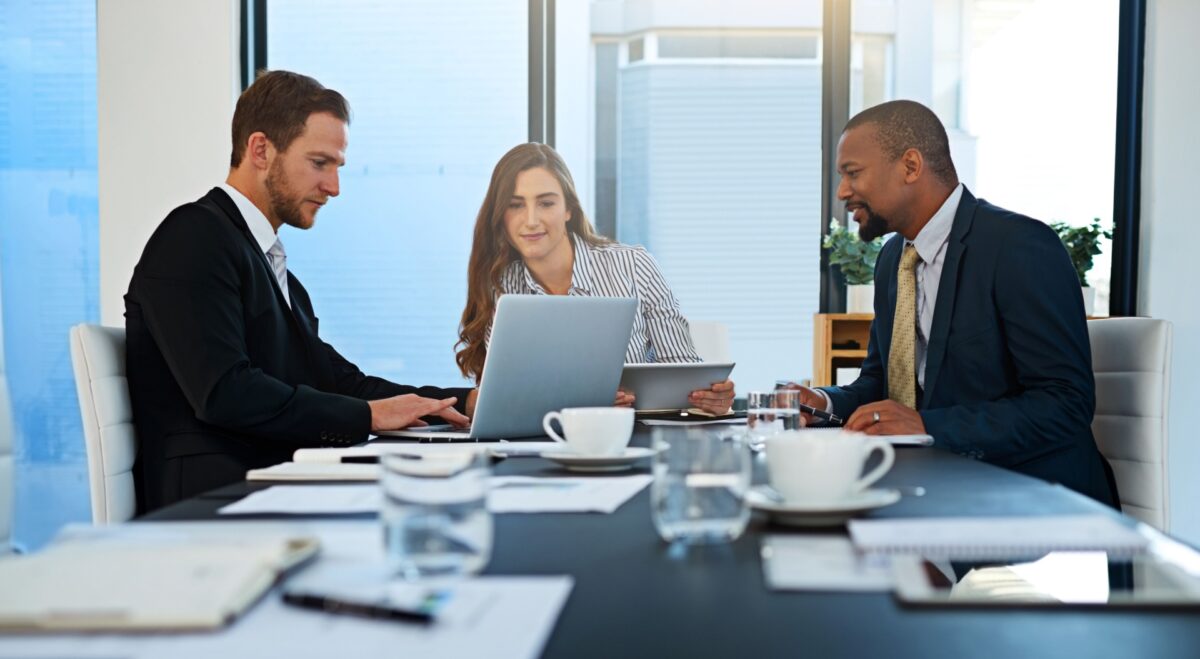Let’s face it — before COVID-19 created a pandemic, you probably spent a big chunk of your daily life at the office. You had a routine you were used to. Of course, schedules can shift from day to day, but overall it was a familiar process.
Then, many people had to adapt to working from home. With Zoom meetings, kids underfoot, and pajama pants in tow, many of us then latched on to that routine, even though it presented its own set of unique challenges.
Now, many places are preparing to go back to work, and the future of office space will look different. Routines will change. A post-COVID office will have different regulations and cleaning protocols. You’ll be somewhat distanced from your colleagues.
The post-COVID world can take a little getting used to. Like all other changes though, you’ll learn to adapt, and there are many things to like about a post-COVID office, particularly some of the design concepts. Read on to learn about some tips to help you navigate the ebb and flow.
Preparing to Go Back to the Office
If you’re not already back at the office, it’s likely a specific guideline has been determined on when to return. Or, right now your office may be doing a mix of hybrid and working from home (WFH), as you might still have some capacity regulations in place. Perhaps you or your employees have enjoyed working from home, and getting back to the office will take some getting used to. Or maybe you have some staff who’ve been itching to get back and are looking forward to it. Either way, make sure to become familiarized with all of the new regulations regarding the return to the office. A lot of things may have to be different, such as signage and stickers, hand sanitizer stations, mask-wearing, elimination of lunchrooms in the interim, and so forth.
Preparing for Office Design Changes
During the lockdown, you may have used some of the time to make some beneficial design changes to your space, such as open office concepts. These types of design concepts have been up-and-coming for several years, but are even more on-trend in a post-COVID world.
Open Office Concepts
You have myriad ways to implement open space concepts, and it completely depends upon your vision of how you want the office to be set up and how you want collaboration to occur. Consider choosing a simple open space concept where desks are simply six feet (or more) apart in a large room with no dividers or cubicles. This allows for sufficient airflow and plenty of room to move. Aesthetically, this design looks best with high ceilings with exposed fixtures (such as pipes) for a minimalist or industrial type of look. These open spaces may take a bit of getting used to, but the hope is that they will promote distancing while boosting productivity.
Open, Yet Separate
Another type of open concept is essentially the return of the cubicle. Opt for dividers and partitions between employees in order to promote safety and social distancing. These won’t be the cardboard-looking cubicle styles of yore, but stylish partitions between workspaces. You can take advantage of the convenience of movable dividers as well, which allows for great collaboration. You and your team can move several times throughout the day as needed, should you need to go to different workstations for different projects. Think about renting mobile dividers since the solution you need now might not be the same solution you need a year from now. CORT offers you this opportunity, in these uncertain times, to have flexible office accessories and furniture that can serve multiple purposes throughout the office when you need it. And when you don’t anymore, we take everything away for you. Plus, renting office furniture and accessories also helps to decrease your carbon footprint by reusing quality products instead of producing more.
Task-Driven Looks
To expound on mobile dividers and the need for mobile workstations, you can also opt for a task-driven, flexible and agile workspace. Instead of assigned desks or seating throughout the office, design workspaces that are movable throughout the day. With new sanitation procedures, these spaces will be sanitized after each use, but they provide spaces for teams to collaborate, and the setup is also a great boost when it comes to efficiency and productivity.
Health and Safety in the Office
Before the pandemic, there’s a good chance you had your office cleaned every night after everyone went home for the day. However, there are now new standards of sanitization and cleanliness in place that will be more thorough than before. While this may take a bit of getting used to, remind yourself that having a clean and sanitized workplace is a benefit to everyone.
Constant, Constant Cleaning
If your office is large enough, there may be a cleaning crew working through the workday, especially in restrooms and in an agile workspace, where there is constant turnover in employee workspaces. These areas should consistently be cleaned. Encourage your employees to be patient while this staff does their job — it’s for everyone’s benefit. You should be following CDC guidance for offices, including the installation of hand sanitizer stations throughout the workspace.
Health and Safety > All Else
Production, efficiency, and productivity are paramount, but the health and safety of the workplace is the most important thing in a post-COVID world. Employee health and wellness should be the main focus of your new office environment. Enforce COVID-19 office regulations, such as an in-office mask mandate. If you’re able, install a place where employees can take “mask breaks,” such as a rooftop garden or other areas that are outdoors. You should also install signage to help encourage social distancing throughout the office. While this is a new territory, it is important, as it is driven by suggestions directly from the CDC.
Wellness Programs and Training
Depending on the nature of your industry, you may be required to undergo COVID-19 education with regard to your job. You also may want to suggest a short course on the facts about SARS-CoV-2 — the virus that causes COVID-19 — and how to stay safe for the members of your team. Also, it’s a plus to promote general information on health and wellness, such as information about proper diet and exercise, getting a flu shot, and handwashing. Evidence suggests that being in overall good health is a factor in recovering from COVID-19 if it’s contracted, so a good employer will encourage better health practices.
Collaboration at a Distance
One of the challenges you’re likely to face in your new office environment is how to successfully collaborate with colleagues at a distance or with masks on. The open office structure does allow for better collaboration, and it was designed with this feature in mind well before the spread of COVID-19.
Open Office = Increased Collaboration
One of the main selling points of an open office plan is that the feeling of a hierarchy is diminished. Of course, you’re still the boss, but the overall office hierarchy look and feel is all but erased. Everyone works together as a team within the same space. In the early days of a post-COVID world, teams may work in cohorts as opposed to moving from team to team to encourage safer practices. You may suggest singular “pod” types of cubicles, where a person can work singularly, then return to the team. Collaboration with social distancing can be a challenge, but it can be accomplished with proper handwashing, mask-wearing, and sanitizing.
Workstations and Team Building
Open space and collaboration work well within an agile workstation construct. This type of idea is based on activity-based working (ABW), where workers choose their workspace based on the type of work they need to do that day. Workers won’t always work in teams daily; quite often, employees will be at solo workstations performing a given task. Then, the team meets together to discuss and create new ideas and disbands. This may be challenging to get used to at first, but to transition into this type of work style, from a social distancing standpoint, you can always reach out to employees via messaging, such as your work Slack, during the day if you need to discuss items. This way, you still have support without having the team meet as a group.
A Home-Like Atmosphere
Many employers have opted for a design that makes the office feel a little homier, especially for those who have been working from home for months. Also, incorporating residential-like furniture into an office setting — such as lounge seating — allows for more social distancing in waiting areas.
Bridging the Gap Between Work and Home
You can’t come into work in your PJs, but you can set the office up with decor and an atmosphere that feels more like a home than a rigid office, particularly if there was a high productivity rate at home during the lockdown. Consider adding games and leisure rooms so employees can catch a quick break in between tasks. Comfortable office spaces may become the new norm.
Eliminating “Common” Rooms
You may find eliminating the lunchroom is a wise move and that employees can now eat lunch at their desks. There’s likely still a place to heat up food, but no tables and chairs. That’s because family-style eating is still discouraged in many areas. Instead, choose singular chairs and coffee tables, or tables that have one chair.
Could This Have Been an Email?
It’s likely you’ll be calling less formal meetings and sending more emails as well. That’s because sitting in a large meeting room may hold the same dangers as sitting in a breakroom together — lack of air circulation, many people in one space, and so on. This is likely one change you won’t be too upset about. Prepare for more BCCs and long emails, and less formal meetings, unless it’s in a large auditorium with ample seating.
Many of these new design and furniture changes can be easily accomplished with furniture rental. It’s a great way to try out new designs and pieces and see what works for this uncertain time. When you’re in the midst of outfitting your office with a new look, CORT Furniture Rental can help.





